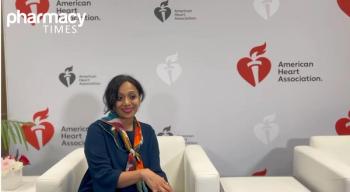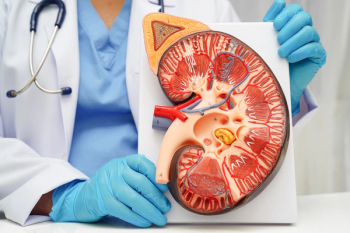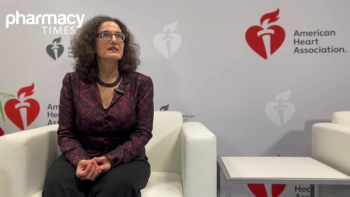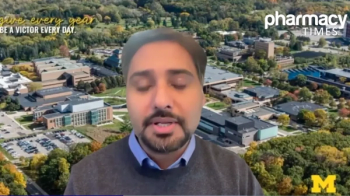
Is 'High Dollar' About to Become the New Normal in Specialty Pharmacy?
The potential for prescription drugs to cost more than $1 million for a treatment regimen creates a mixed bag of conundrums for the health care system.
In specialty pharmacy, we are used to handling high-cost medications. In fact, a high price point is typically included in the general definition of what constitutes a specialty therapy.
However, we are rapidly approaching new heights in terms of what the term “high dollar” could mean in the current and future health care space. As some specialty therapies have cleared the 6-figure mark, manufacturers, payers, specialty pharmacies, and health systems are being forced to reinvent the wheel.
The next wave of pharmaceutical products being developed are focused on targeted gene therapies for rare disease states that affect small populations. As the therapies within this pipeline come to market, they will invariably alter the current infrastructure and could be replaced by a system that supports the dispensing, billing, and distribution of these new drugs.
Approaching the Glass Ceiling
In December 2017, Wall Street was anticipating the release of US drug maker Spark Therapeutics’ novel gene therapy Luxturna. Although the price tag was not divulged right away, initial speculation by Wall Street analysts was that the treatment could top in excess of $1 million.
The drug was approved by the FDA a month ahead of schedule and would be the first directly administered gene therapy product brought to market. Although it was hard to imagine that any drug could possibly be worth that much, it was equally hard to believe the benefits this therapy could potentially deliver. In clinical trials, Luxturna demonstrated that it was capable of reversing a specific type of hereditary blindness.
In early January 2018, Spark Therapeutics surprised the masses when the drug came in under the million-dollar mark at $850,000 to treat both eyes. Even though the actual price tag was lower than initially anticipated, it was still the highest priced therapy in the United States to date.
A first of its kind treatment, Luxturna is a one-time pharmacologic gene therapy designed to treat patients with a rare progressive form of blindness called inherited retinal disease, which is caused by mutations in both copies of the RPE65 gene. Administered by sub-retinal injection, the mechanism of action of the drug involves using a modified adenovirus to replace the defective copy of the RPE65 gene with a functional copy, thus reversing the inherent progression of blindness associated with this disease.
The therapy sounded as if it were straight out of a work of science fiction, but it was real and it was finally here. Although the launch of gene therapies provides a wave of hope, excitement, and new possibilities that were once only dreamed of, the potential of prescription drugs now shattering the $1 million glass ceiling simultaneously creates a mixed bag of conundrums.
How will the current health system sustain these exorbitant drug costs? Who should pay for such therapies? Are we treating or are we curing? What changes does this mean for the current infrastructure of our pharmacy and payer systems?
The Rundown on Gene Therapy
There are approximately 150 gene therapies currently in development. Both present-day and future applications of gene manipulation include 3 main approaches: gene replacement, gene editing, and antisense oligonucleotides or small interfering RNAs.
Luxturna is an example of gene replacement technology in which a functional copy of a gene is delivered exogenously and replaces the mutated copy. Nearly two-thirds of the gene therapy pipeline are comprised of gene replacement products.
Antisense oligonucleotides and small interfering RNAs work at the level of translation by silencing gene expression, accounting for approximately 30% of programs in development. The smallest segments of gene therapy projects are those targeting gene editing and are still in the earliest stages of development.
Gene editing involves the use of engineered nucleuses to actually correct a dysfunctional gene in situ. Seventy percent of emerging gene therapies are being tested in rare disease states with ophthalmologic, metabolic, and hematologic disorders accounting for more than half of the disease targets in the gene therapy pipeline.
In specialty pharmacy, we should all be preparing for what that could possibly mean for our business, our systems, and our patients. With a pipeline that is bursting with novel gene therapies, one can only assume that as these entities come to market, they will boast a hefty price tag as well. Are we ready?
Shifting the Landscape
Within current pharmacy platforms and insurance systems, the billing of an electronic claim for a drug that exceeds 5 figures is not only unheard of, but it is impossible. Most, if not all systems have a character limit in the cost field that won’t even allow for it.
Not to mention, that no one could have ever imagined that we would see the day that a prescription could near $1 million. The current questions being asked include how do we approach treatment, how do we bill for that treatment, who incurs the exorbitant cost, and most importantly, how will we measure health outcomes to ensure maximum value is being delivered?
More than likely, drug companies will have to become deeply engaged with devising ways to make high cost medications more affordable and accessible overall. By more affordable, I don’t necessarily mean discounting the price, but rather creating value-based arrangements with payers or setting up payment plans that can diffuse the high cost responsibility over time or over multiple stakeholders.
Specialty pharmacies should be taking stock of their current systems and which changes they might need to implement to be able to bill high cost therapies that exceed the million dollar threshold.
Value-Based Contracting
The current system is largely focused on short-term value due to the ability of patients to be able to switch insurance companies at any time and the lack of outcomes-based reporting and requirements. Under the value-based contracting concept, manufacturers agree to pay rebates to insurers if the outcomes fail to meet baseline expectations.
This model makes sense for insurers and allows them to mitigate any financial risks associated with a high cost drug that does not perform. Offering rebates and refunds in the event that the treatment does not work or only works to some extent helps save the organization money, as well as patients who may be paying out of pocket.
Leading up to the launch of Luxturna, Spark Therapeutics worked with payers to formulate outcomes-based arrangements in order to ensure access and affordability. The innovative contracting model developed in conjunction with Harvard Pilgrim, a leading health service coverage with more than 1.2 million members, eliminates some of the financial risk that is typically incurred by payers and institutions that buy and bill expensive specialty medications.
In this arrangement, the fee-for-service model is replaced with pay-for-performance. Short-term efficacy and long-term durability of treatment are tested to determine whether or not the therapy has performed as expected.
Unique measures at specified time intervals are captured to determine whether the patient is adequately responding to treatment. In the event that patient outcomes do not meet a certain threshold, Spark Therapeutics issues rebates to insurers, thus assuming a share of the financial responsibility.
Establishing the New Normal
Luxturna is among several of the first gene therapies that have reached regulatory approval in recent years and certainly won’t be the last. Earlier in 2017, the FDA approved 2 novel chimeric antigen receptor T cell (CAR-T) therapies based on gene transfer, tisagenlecleucel (Kymriah) for a rare form of pediatric lymphoblastic leukemia and axicabtagene ciloleucel (Yescarta) for B-cell lymphoma. The launch of Luxturna was a significant milestone for gene therapies as it expanded the scope of treatment beyond cancer.
The list prices of tisagenlecleucel and axicabtagene ciloleucel were set at $475,000 and $373,000, respectively. Although these novel therapies came with a monumental sticker shock, their potential treatment impact is life-changing rather than life-sustaining.
Nevertheless, the thought of a $1 million drug is still jaw-dropping and justifying such high costs are the subject of ongoing debates. However, using non-traditional payment models, the new era of drugs that is based on targeted gene therapies might allow us to incur upfront costs instead of the costs associated with a lifetime of treatments and subsequent hospital stays due to disease progression.
The current health care industry is driven by a stream of steady payments for chronic therapies. However, because of gene therapies, we are beginning to enter a new phase of health care, in which we no longer manage chronic conditions over a lifetime. In the new normal, prescription drugs aren’t just treating, they’re curing.
Leveraging Specialty Pharmacy
Manufacturers such as Spark Therapeutics need look no further when determining how to dispense and distribute high dollar medications. Although it might take some adjustments to achieve the appropriate setup, specialty pharmacy is well poised to handle the storage, transit, and delivery of gene therapies. In coordination with payers and providers, specialty pharmacies can also use their clinical expertise to facilitate the capturing and tracking outcomes of therapy.
Necessity is the Mother of Invention
As an increasing number of innovative, high dollar products become available, specialty pharmacies and payers alike will have to adapt to the changing requirements of nontraditional payment models.
Whether that means expanding character limits of fields in order to accommodate the electronic billing of these medications or developing ways to submit a series of installment payments over time, disruption of the current fee-for-service model will eventually give way to a much-needed outcomes-based solution that balances financial risks more evenly across all stakeholders.
In terms of early adoption of these changes, just as the old adage goes: the early bird gets the worm, the early specialty pharmacy gets the contract.
References
- Dall’Osso, C. & Saini, A. (2018, March 26). The Gene Therapy Pipeline — And the Biggest Challenges Facing Developers. Retrieved from https://www.bioprocessonline.com/doc/the-gene-therapy-pipeline-and-the-biggest-challenges-facing-developers-0001
- Feuerstein, A. (2017, December 19). FDA Approves First Gene Therapy Targeting Rare Form of Inherited Blindness. Retrieved from https://www.scientificamerican.com/article/fda-approves-first-gene-therapy-targeting-rare-form-of-inherited-blindness/
- Fidler, B. (2018, January 12). Spark CEO Marrazzo on Gene Therapy Pricing & Paving the Way for the Field. Retrieved from https://xconomy.com/national/2018/01/12/spark-ceo-marrazzo-on-gene-therapy-pricing-paving-the-way-for-the-field/
- Haberman, A. (2017, December 21). FDA Approves Spark Therapeutics’ Retinal Disease Gene Therapy Luxturna, a Month Ahead of Schedule. Retrieved from https://biopharmconsortium.com/2017/12/21/fda-approves-spark-therapeutics-retinal-disease-gene-therapy-luxturna-a-month-ahead-of-schedule/
- Kerali, H. (2018, July 18). The Arrival of Gene Therapy and Personalized Medicine. Retrieved from https://www.clinicaltrialsarena.com/news/oncology/arrival-gene-therapy-personalized-medicine/
- Ramsey, L. (2017, December 19). The FDA Just Approved the First Gene Therapy to Treat Blindness. Retrieved from https://www.businessinsider.com/fda-approves-luxturna-gene-therapy-for-hereditary-blindness-2017-12
- Sagonowsky, E. (2018, January 3). Spark Sets Off Gene Therapy Debate with $850K Sticker on Luxturna. https://www.fiercepharma.com/pharma/spark-prices-gene-therapy-luxturna-at-850k-grabbing-top-spot-pharma-s-costliest-drugs
- Tirrell, M. (2018, January 3). A US Drugmaker Offers to Cure Rare Blindness for $850,000. Retrieved from https://www.cnbc.com/2018/01/03/spark-therapeutics-luxturna-gene-therapy-will-cost-about-850000.html
- Express Scripts is Getting Paid to Help Pharma Companies Dispense a New Generation of High-priced Drugs (2018). Retrieved from https://www.cnbc.com/2018/08/15/express-scripts-is-getting-paid-to-help-pharma-companies-dispense-a-ne.html
About the Author
Jacqueline Hanna earned her Bachelor of Science in Biological Sciences from the University of Pittsburgh before earning her Doctor of Pharmacy degree from Duquesne University in 2011. She recently received her Master of Science in Pharmacy Business Administration (MSPBA) program at the University of Pittsburgh, a 12-month, executive-style graduate education program designed for working professionals striving to be tomorrow’s leaders in the business of medicines. Jacqueline has spent the last 4 years working in Specialty Pharmacy, initially as a clinical pharmacist and most recently working on a variety of high-profile Specialty Operations Projects. In her current role, she is able to channel her passion for patient care into innovation and process design while being part of a concerted effort to transform Specialty Operations and improve the patient experience.
Newsletter
Stay informed on drug updates, treatment guidelines, and pharmacy practice trends—subscribe to Pharmacy Times for weekly clinical insights.
















































































































































































































